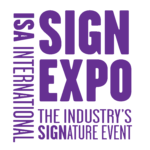The U.S. Federal Communications Commission (FCC) continues to cite businesses because digital signs are interfering with the wireless spectrum, creating problems with commercial and public wireless devices. This may occur because the signs are operating at Electro Magnetic Interference (EMI) levels not allowed under U.S. federal law and in violation of FCC regulations.
ISA urges all sign, graphics and visual communications companies to comply with relevant federal law, including FCC regulations.
Questions
If you have any questions about complying with the FCC regulations, please contact David Hickey, ISA vice president of advocacy at (703) 797-0479.
A few things to know:
- Digital devices, including digital signs, sold in the U.S. must be tested by accredited laboratories under normal operating conditions to demonstrate compliance with FCC rules. These devices are required to carry a two-part warning label or certificate of compliance, according to Subpart B of Section 15 of Title 47 of the Code of Federal Regulations (CFR).
- If a digital sign is found to violate either the equipment authorization rules or to cause interference to the wireless spectrum, the sign’s owner or manufacturer may have to pay a fine. If the sign cannot be brought into compliance, it can no longer be used. Other penalties may be included for willful violation of the FCC’s rules or citations.
- Consult your attorney to determine the applicable requirements under U.S. law for your products and services, or for advice on how to work with your manufacturer/supplier to ensure compliance.
ISA is developing educational programming to help the sign, graphics and visual communications industry better understand compliance responsibilities under the FCC’s rules and precedent.
FCC Compliance FAQs
In order to increase awareness and ensure compliance with FCC regulations, the below FAQ is designed to help sign companies better understand these issues.
How can a sign company ensure that the digital signs it purchases from a manufacturer are FCC compliant?
- The best ways to confirm that a digital sign is FCC-compliant are to (1) ensure that the equipment has the necessary compliance statement; (2) ask the “responsible party” (i.e., the manufacturer) to provide the testing data demonstrating compliance with the applicable emissions rules; and (3) ensure that the equipment has not been modified or changed in a way that causes the equipment to no longer meet the applicable equipment standards. These elements are described in more detail below.
- By way of background, the FCC has two different equipment authorization regimes: (1) certification; and (2) a supplier’s declaration of conformity (“SDoC”).1
- The FCC issued guidance in June 2016 clarifying that most RF LED lighting devices are “unintentional radiators” and thus were subject to the FCC’s verification (now SDoC) equipment authorization procedures.
- Large LED digital displays, for example, are subject to the FCC’s Part 15 rules and SDoC process.
- Compliance measurements for large LED digital displays are to be performed in accordance with the measurement procedures outlined in ANSI C63.4-2014.
- Large LED digital displays, for example, are subject to the FCC’s Part 15 rules and SDoC process.
- However, if the LED digital display includes an “intentional radiator” (for example, a Bluetooth or Wi-Fi transmitter) then the radio portion of the display must also be authorized using the FCC’s certification process.
- The FCC issued guidance in June 2016 clarifying that most RF LED lighting devices are “unintentional radiators” and thus were subject to the FCC’s verification (now SDoC) equipment authorization procedures.
- The FCC’s equipment authorization regimes require “responsible parties” to comply with FCC rules before their products are sold or imported.
- The responsible party for equipment subject to the SDoC rules is usually the manufacturer.
- If equipment is assembled from individual component parts and the resulting system is subject to SDoC authorization, then the assembler is the responsible party.
- Similarly, importers are the responsible party for equipment or systems that are imported into the U.S.
- The responsible party must be located in the United States.
- The responsible party for equipment subject to the SDoC rules is usually the manufacturer.
- Compliance Statement: Signs that qualify for equipment authorization through the FCC’s SDoC process must include a compliance statement with product literature that identifies for the consumer a party who is responsible for the equipment’s compliance with the FCC’s technical regulations.
- The equipment must also include the following statement: “This device complies with part 15 of the FCC Rules. Operation is subject to the following two conditions: (1) This device may not cause harmful interference, and (2) this device must accept any interference received, including interference that may cause undesired operation.”
- If the labeling area is too small or it is impractical to include this statement on the device, then the statement may be placed in the user manual or product packaging.
- The identification should not be designed in a way that could be confused with an “FCC Identifier,” a silver label with an FCC certification number included on units subject to the FCC’s certification procedures.
- Below are a few examples of the type of compliance statement that should accompany your signs:
- The equipment must also include the following statement: “This device complies with part 15 of the FCC Rules. Operation is subject to the following two conditions: (1) This device may not cause harmful interference, and (2) this device must accept any interference received, including interference that may cause undesired operation.”

- Testing data: The responsible party (i.e., the sign manufacturer, assembler or importer) is also required to retain, among other information, records of (1) the testing date; (2) the name of the test laboratory, company or individual performing the testing; (3) a description of how the device was actually tested, including a description of the measurement procedure used and a list of the test equipment actually employed; and (4) all data required to show compliance with the FCC’s equipment authorization regulations.
- Digital sign companies should place a higher degree of trust in test results provided by accredited third-party laboratories than non-accredited testing agencies; however, accreditation is not required for third-party testing of equipment under the FCC’s SDoC rules.
- No Modification: Additionally, sign companies should ask the responsible party to verify that it has not modified or changed the design, manufacturing process or assembly of the digital signs in a way that would adversely affect the emanation characteristics of the equipment.
- An SDoC signifies that the responsible party has determined that the equipment has been shown to comply with the applicable technical standards if no unauthorized change is made in the equipment and if the equipment is properly maintained and operated.
- The responsible party has an ongoing obligation to ensure compliance with the FCC rules in the event it modifies the equipment.
- If equipment is modified by any party not working under the authority of the responsible party, the party performing the modifications becomes the new responsible party.
- To the extent a responsible party may not be aware of its ongoing obligations, asking about equipment modifications can help ensure that the equipment as sold to the sign company continues to comply with the rules.
- Manufacturers can take several steps to help ensure that its equipment has not been modified without its permission (or to identify modifications should they occur in the field). As examples, manufacturers could:
- Design the equipment in a manner that makes it tamper- proof;
- Include pictures or depictions in the equipment’s user manual showing proper configuration; or
- Engage in periodic monitoring of equipment.
- Furthermore, ISA members should consider including representations and warranties in their purchasing contracts guaranteeing that the responsible party has not modified its equipment design, manufacturing process or assembly for the sign following its SDoC.
- Manufacturers can take several steps to help ensure that its equipment has not been modified without its permission (or to identify modifications should they occur in the field). As examples, manufacturers could:
- An SDoC signifies that the responsible party has determined that the equipment has been shown to comply with the applicable technical standards if no unauthorized change is made in the equipment and if the equipment is properly maintained and operated.
- Testing data: The responsible party (i.e., the sign manufacturer, assembler or importer) is also required to retain, among other information, records of (1) the testing date; (2) the name of the test laboratory, company or individual performing the testing; (3) a description of how the device was actually tested, including a description of the measurement procedure used and a list of the test equipment actually employed; and (4) all data required to show compliance with the FCC’s equipment authorization regulations.
- The compliance statement required under the FCC rules is the best way for sign companies to prove to their customers that their digital signs are properly authorized under the equipment authorization rules.
- But the FCC’s equipment authorization procedures are not the only determinant of FCC compliance once the product is in use.
- Separate and apart from a “responsible party’s” obligations under the FCC’s equipment authorization rules, the end user will usually be the initial point of contact if there is any harmful interference caused to other nearby operations—particularly licensed operations. Therefore, the end user should read the materials carefully to ensure compliance and proper use, avoid using equipment that is not labeled or functioning properly, and take any other reasonable steps to avoid causing harmful interference.
- When the FCC initially investigates interference complaints it usually begins the process by issuing a citation or warning letter to the owner of the interfering equipment.
- Depending on the type of interference and its severity, the FCC may give the end user a period of time to resolve the interference issues or immediately demand that the end user stop using the interfering equipment.
- In most cases, a wireless provider (i.e., Verizon, AT&T, etc) or other party learns of complaints from customers and notifies the FCC’s local field offices. The local field office will then dispatch directional finding equipment to investigate and determine the source of interference.
- Sometimes, the complainant will conduct its own investigation prior to contacting the FCC and will attempt to work with the potential source of the interference to resolve the issue without FCC intervention.
- In most instances, the FCC will provide the end user a number of days to attempt to resolve the interference issues before requiring the end user to discontinue operations.
- In recent enforcement actions involving digital signs, the FCC provided the respondents between 10 and 30 days to resolve interference issues depending on the amount of interference and the service being interfered with.
However, if the digital sign is causing a more immediate and serious degree of interference (for example, if the sign is interfering with critical public safety communications), then the FCC may order the end user to cease operations immediately.
- Potentially there are financial, civil and criminal penalties. For example, if the equipment creates spurious emissions on a licensed frequency, the FCC will consider this as transmitting without an FCC authorization or license. The penalties for transmitting without a license include “substantial monetary forfeitures, in rem arrest action against the offending radio equipment [i.e., confiscation], and criminal sanctions including imprisonment.”
- In the case of a cited sign that refuses to discontinue operations, the FCC will most likely assess penalties against the end user, i.e., the business that purchased the digital sign from a sign company.
- While the FCC’s rules designate a manufacturer (or importer in the case of imported equipment) as the “responsible party” for equipment authorization purposes, once a digital sign is deployed in the field and begins to start causing harmful interference, the FCC will hold the end user responsible for ensuring that the sign does not cause harmful interference to other, higher priority operations.
- In other enforcement proceedings not involving digital signs, the FCC has entered into consent decrees or other enforcement actions against end users based on their repeated failure to address interference concerns.
These consent decrees have involved both monetary and non-monetary sanctions, such as cessation of operations and the development of a compliance plan, depending upon the types of interference and the willfulness of the rule violations.
- It likely depends on the make, model and manufacturer of the digital sign in question.
- There is a separate question of whether the FCC will allow a non-compliant sign to become compliant by receiving a retrofit in the field (assuming such a retrofit is possible from a technical perspective).
- Several FCC rules stipulate that the responsible party will correct equipment currently deployed in the field, and the responsible party (in this case, the manufacturer) should keep documentation showing that the retrofit has been tested and will achieve compliance with the appropriate technical standards.
- The liability issues will likely depend on the terms of your commercial agreements. The FCC will likely begin its enforcement investigation against the end user (i.e., the owner of the sign), but the FCC could also pursue the responsible party based on its investigation.
- The end user could sue the sign company and/or the manufacturer based on an alleged breach of any warranties included in the sales contract.
- Additionally, under the FCC’s rules the responsible party warrants that each unit of equipment marketed under an SDoC will be identical to the unit tested and found acceptable with the standards and that the records maintained by the responsible party continue to reflect the equipment being produced under such SDoC within the variation that can be expected due to quantity production and testing on a statistical basis. This could support possible liability even in the absence of contractual warranties.
- We are not aware of any FCC rule or precedent mandating self-reporting of equipment authorization violations.
- But a sign company that is made aware of an existing violation is expected to take immediate action to cease any further violations of the FCC’s rules.
At a minimum, the company should not purchase any signs from the non-compliant manufacturer. Ideally, the sign company should contact the sign manufacturer and attempt to negotiate replacement of any currently operating signs with FCC-compliant signs.
- As noted above, the FCC’s rules designate a “responsible party” for purposes of initial equipment authorization.
- For equipment subject to the FCC’s SDoC procedures, the manufacturer is responsible for ensuring compliance with the equipment authorization procedures.
- If equipment is assembled from individual component parts and the resulting system is subject to authorization under a SDoC, then the assembler is the responsible party.
- In cases of imported equipment, the importer is responsible for ensuring compliance with the equipment authorization procedures.
- For equipment subject to the FCC’s SDoC procedures, the manufacturer is responsible for ensuring compliance with the equipment authorization procedures.
- The FCC’s rules require the responsible party to maintain records of the original design drawings and specifications for the equipment, the procedures used for production inspection and testing, and the measurements made at an appropriate test site that demonstrates compliance with the FCC’s rules.
- In the event properly authorized equipment is accused of causing interference, a sign company could hire a third-party engineer to measure emissions and determine if the sign is causing a problem.
- The equipment can also be removed or retested for certification or SDoC purposes once deployed in the field.
- Manufacturers and importers – which may include sign companies – are responsible for complying with the FCC’s equipment authorization rules.
- Specifically, no radio frequency device may be imported into the Customs territory of the United States unless the importer or ultimate consignee, or their designated customs broker, determines that the device meets one of the FCC’s conditions for entry, such as issuance of an equipment authorization by the FCC or, in the case of devices not requiring an authorization, compliance with FCC technical administrative regulations.
- Distributors of imported equipment may be liable under the FCC’s rules for trafficking in non-compliant equipment, depending on their role in the import process.
- For equipment manufactured domestically, however, distributors are unlikely to have responsibility for complying with the FCC’s equipment authorization rules. Instead, initial FCC rule compliance in the manufacturing and testing of devices should fall to manufacturers as the responsible party.
- Moreover, the device owner (i.e., the sign end user) is responsible for operating the device in such a manner that it does not cause interference.
- Potentially all of the above. For example, if the equipment creates spurious emissions on a licensed frequency, the FCC will consider this as transmitting without an FCC authorization or license. The penalties for transmitting without a license include “substantial monetary forfeitures, in rem arrest action against the offending radio equipment [i.e., confiscation], and criminal sanctions including imprisonment.”
- In the case of a cited sign that refuses to discontinue operations, the FCC will most likely assess penalties against the end user.
- While the FCC’s rules designate a manufacturer (or importer in the case of imported equipment) as the “responsible party” for equipment authorization purposes, once a sign is deployed in the field and begins to start causing harmful interference, the FCC will hold the sign operator responsible for ensuring that the sign does not cause harmful interference to other, higher priority operations.
- For example, in the two FCC decisions noted above the FCC contacted either the end user or the distributor regarding interference concerns. If these entities had failed to mitigate the interference then the FCC likely would have assessed penalties against the same companies.
- In other enforcement proceedings not involving digital signs, the FCC has entered into consent decrees or other enforcement actions against end users based on their repeated failure to address interference concerns.
- These consent decrees have involved both monetary and non-monetary sanctions, such as cessation of operations and the development of a compliance plan, depending upon the types of interference and the willfulness of the rule violations.
- There are several steps you can take to safeguard yourself and your customers against FCC complaints.
- You should ask the sign manufacturer to provide you with proof of equipment certification or an SDoC, as well as information on the testing procedures used to determine FCC compliance and, if applicable, the name of the independent laboratory used to test or certify the equipment.
- In addition, we recommend purchasers of sign equipment include indemnification clauses in their sales contracts requiring the manufacturer to replace interfering equipment and to indemnify the seller (and end user) against any FCC fines and any costs associated with FCC or internal investigations arising out of or related to the purchase and operation of the sign.
- We encourage end users and sign companies to quickly respond to FCC inquiries related to potential sign interference.
- Sign companies should work cooperatively with the FCC and third parties to resolve interference inquiries but not automatically assume that their sign is the source of the problem.
- The FCC should act impartially in its field investigation of the potential source of interference. But you do have the option of hiring a private RF engineer to confirm (or dispute) the FCC’s findings.
- Prior to installing a sign, the sign company and end user can best mitigate potential risk by ensuring that the sign has been tested and is properly authorized.
- The FCC has previously explained that “responsible parties” can mitigate interference from lighting devices by (1) using good engineering design and construction techniques, to meet and even exceed the required attenuation of unwanted emissions; (2) extending compliance testing beyond the frequency range guidance traditionally required; and (3) providing suggested interference mitigation techniques to end users on how to resolve harmful interference problems.
- After the sign is installed, sign companies and end users can mitigate risk by promptly responding to inquiries from potential FCC complainants (such as wireless carriers and amateur radio operators) that claim the sign is causing harmful interference. The entities should also promptly respond to any FCC inquiries.
- The FCC maintains a searchable registry of FCC-authorized compliance testing laboratories that can conduct both certification and SDoC testing.
- You can search by name, city, state, country and registration number.
The equipment authorization rules are located in Subpart J of Part 2, Part 15 and Part 18 of Title 47 of the Code of Federal Regulations (as well as FCC implementing orders).
